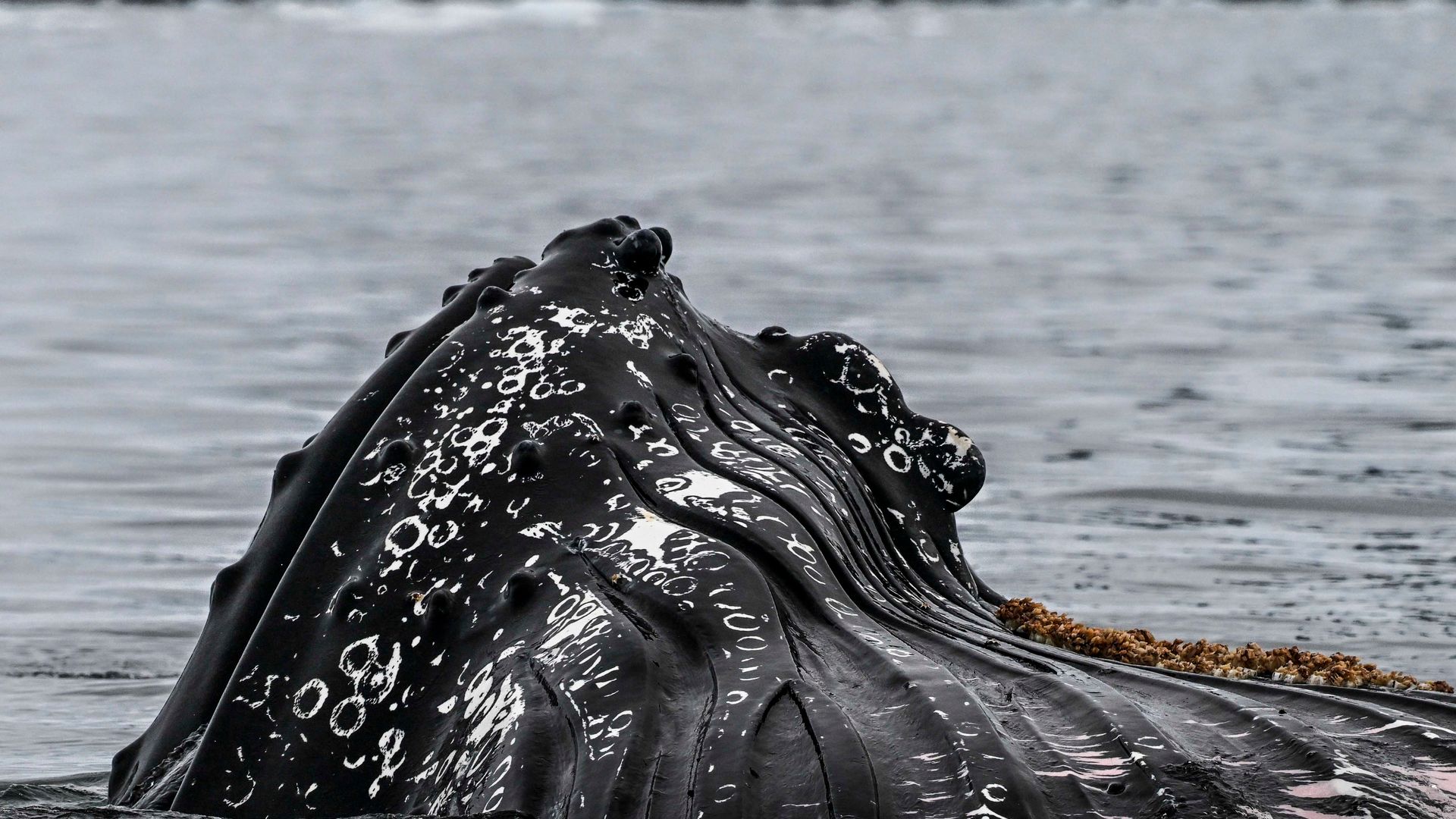
[LAUREN TAYLOR]
CHIRPS, HOWLS, THE CLICKS, WHISTLES AND PULSED CALLS OF WHALES, EVEN THE SCREECH OF A BAT MAY SOUND LIKE NOTHING MORE THAN NOISE.
HOWEVER, SCIENTISTS SAY IT’S MUCH MORE THAN THAT– IT’S A LANGUAGE– MORE COMPLEX THAN WE MAY HAVE EVER THOUGHT.
NOW, HARNESSING THE POWER OF ARTIFICIAL INTELLIGENCE – RESEARCHERS BELIEVE THEY’RE BEGINNING TO DECODE THE LANGUAGE OF NATURE.
AND THEY THINK THEY ARE CLOSER THAN EVER.
SCIENTIFIC AMERICAN REVEALED SCIENTISTS ARE USING THE ADVANCEMENTS IN A-I TO MAKE BREAKTHROUGH DISCOVERIES– FROM THE INTRICATE LANGUAGE OF BATS– TO THE UNDERWATER FREQUENCIES OF WHALES.
THE METHOD INVOLVES BIOACOUSTICS, WHICH RECORDS THE SOUNDS OF INDIVIDUAL ORGANISMS– AND ECOACOUSTICS, WHICH RECORDS THE SOUNDS OF ENTIRE ECOSYSTEMS.
A-I SIMILAR TO GOOGLE TRANSLATE THEN BREAKS DOWN THE DATA–
AND DECIPHERS WHAT ANIMALS ARE “SAYING” TO EACH OTHER.
RESEARCHERS SAY IT’S CREATING AN UNDERSTANDING OF SPECIES ON A DEEPER LEVEL.
FOR INSTANCE, EXPERTS DISCOVERED HONEYBEES COMMUNICATE THROUGH VIBRATIONS IN THEIR WINGS– AND THE POSITIONS OF THEIR BODIES– EVEN THE ANGLE OF THE SUNLIGHT PROJECTING ONTO THEM CAN SEND A MESSAGE TO THE COLONY.
BAT MOTHERS “SPEAK” DIFFERENTLY TO THEIR BABIES– THEN THEY DO TO THEIR ADULT COUNTERPARTS– ELICITING A “BABBLE-LIKE” RESPONSE FROM THEIR YOUNG– IN THE PROCESS TEACHING THEM THE LANGUAGE OF THEIR SPECIES.
THE BBC SHADOWED SCIENTISTS USING AI TO UNCOVER THE HIDDEN LANGUAGE OF A BAT COLONY IN TEL AVIV ISRAEL, USING AUDIO AND VIDEO TO ANALYZE THE NOISES.
[ADI RACHUM, TEL AVIV UNIVERSITY]
“We are teaching the computer how to define between the different sounds and recognize what each sound means when we can hear it. For example, here, these are mating sounds.”
[LAUREN TAYLOR]
VICE NEWS REPORTS SCIENTISTS HAVE ALSO DISCOVERED PREVIOUSLY UNKNOWN ELEMENTS OF WHALE VOCALIZATIONS- USING AI.
THANKS TO AI, SCIENTISTS FOUND SPERM WHALES USE ACOUSTICS KNOWN AS “CODAS” THE SAME WAY HUMANS USE VOWELS IN LANGUAGE.
THE AUTHORS OF THE STUDY WROTE:
“IF OUR FINDINGS ARE CORRECT, IT MEANS THAT THE COMMUNICATION OF SPERM WHALES IS MUCH MORE COMPLEX THAN PREVIOUSLY THOUGHT.”
AT THE WORLD ECONOMIC FORUM LAST YEAR, SCIENTIFIC EFFORTS REGARDING A-I AND ANIMAL LANGUAGE WERE ON DISPLAY.
THE EVENT FEATURED THE NONPROFIT, EARTH SPECIES PROJECT, WHICH DECIPHERS THE LANGUAGE OF DIFFERENT SPECIES USING A-. THE ORGANIZATION WORKS WITH 40 BIOLOGISTS AND INSTITUTIONS, WHO PROVIDE THEM WITH SOUND DATA TO ANALYZE THROUGH AI.
THE ORGANIZATION SAID IT BELIEVES THE DATA WILL BE USED TO CREATE “TWO-WAY” COMMUNICATION BETWEEN HUMANS AND ANIMALS SOME DAY.
DURING THE WORLD ECONOMIC FORUM, SCIENTISTS SAID BEING ABLE TO COMMUNICATE WITH ANIMALS THROUGH A-I WILL HAVE WIDE RANGING IMPACTS.
EXPERTS SAID, IT MAY BE USED TO DETERMINE THE HEALTH OF RAINFORESTS– AND IS ALREADY BEING USED TO PROTECT WILDLIFE IN THE OCEAN. — BY IDENTIFYING SHIPPING ROUTES– AND CREATING “MOBILE MARINE PROTECTED AREAS.”







